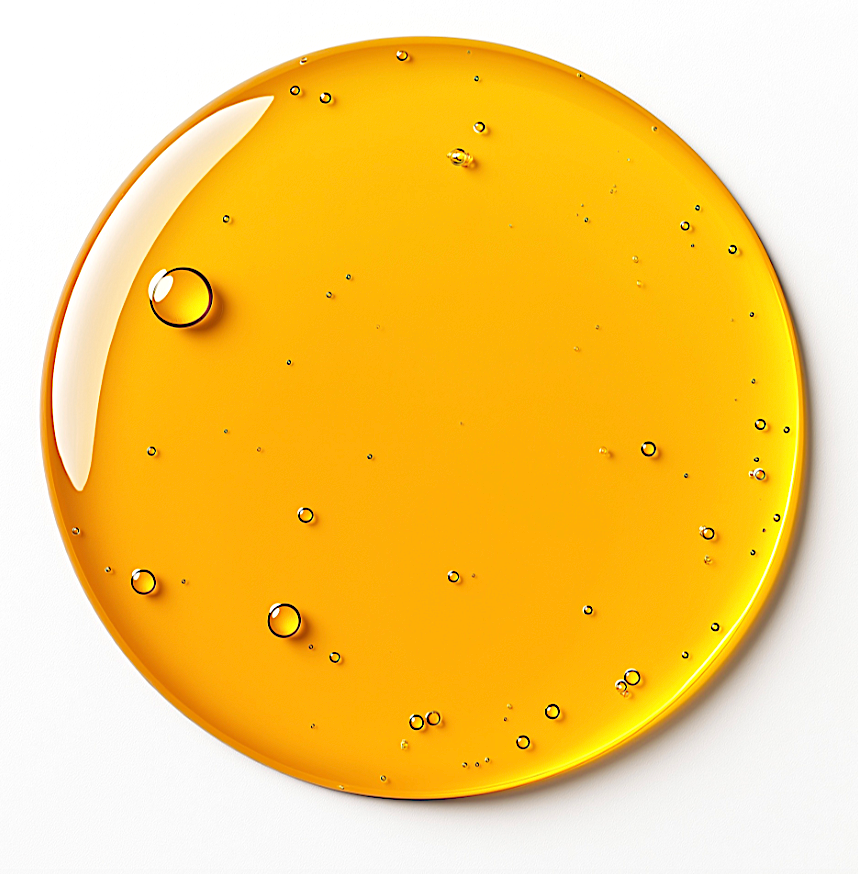
Should You Use Injectable Peptides and Topical Peptides for Anti-Aging & Longevity?
Partager
Disclaimer & Medical Notice (Please Read First):
I am not a medical doctor. This article presents research, theories, and perspectives on the use of peptides for anti-aging and longevity. Always consult a qualified physician (ideally one experienced in peptide therapy, dermatology, or longevity medicine) before considering any injectable or topical peptide regimen. Peptide therapies are still in a developing stage, and many uses are off-label, experimental, or not yet proven safe in large human trials.
Aging is a natural biological process, yet for many people, it feels like a challenge to be conquered. From changes in skin texture and firmness to reduced cellular repair and hormonal decline, the search for effective anti-aging solutions has led science to one promising frontier: peptides. In recent years, injectable peptides and topical peptide formulations have become the focus of both clinical research and cosmetic innovation. But should you actually use them for anti-aging and longevity? This article explores the science, safety, and strategy behind both approaches so you can make an informed choice.

Understanding Peptides and Their Role in Aging
Peptides are short chains of amino acids that serve as signaling molecules in the body. They are smaller than proteins but have significant biological activity, often telling cells how to behave, repair, or regenerate. Because peptides can mimic natural bodily signals, they can influence collagen production, tissue regeneration, fat metabolism, and even hormonal balance.
In the context of aging, peptides are particularly valuable because they address many hallmarks of aging, such as reduced collagen and elastin synthesis, inflammation, oxidative stress, and slower cell turnover. When used in skincare or regenerative medicine, peptides can stimulate cellular repair, encourage firmness, and promote a youthful, more resilient appearance.

How Peptides Work for Anti-Aging and Longevity
The skin and body naturally produce peptides that regulate processes like healing, pigmentation, and immune response. As we age, production of these peptides decreases, leading to visible and structural signs of aging. By supplementing with topical or injectable peptides, users can potentially reintroduce these biological messages to stimulate rejuvenation.
Peptides can:
Enhance collagen and elastin production, leading to firmer skin and reduced wrinkles.
Improve hydration and cellular communication.
Accelerate wound healing and tissue repair.
Regulate inflammation and oxidative stress.
Activate longevity-related pathways like AMPK, sirtuins, and mitochondrial repair.
Support growth hormone release, cellular regeneration, and metabolic efficiency.
Because of these effects, peptides have become a key focus in the field of longevity and biohacking medicine. But it is important to understand that not all peptides are created equal and delivery method is crucial.

Injectable Peptides: Deep Systemic Action for Longevity
Injectable peptides are typically administered under the skin or intramuscularly, allowing them to bypass the digestive tract and reach systemic circulation directly. This route makes them far more bioavailable than oral or topical forms and allows them to influence deep biological systems.
Injectable peptides can act on the pituitary gland, immune system, or mitochondria. Popular examples include GHRP-2, CJC-1295, Ipamorelin, BPC-157, and GHK-Cu. Some peptides, like MOTS-c and SS-31 (Elamipretide), target mitochondrial function to improve energy metabolism and protect against cellular damage associated with aging.
These compounds have shown promise in clinical and preclinical studies for increasing lean muscle, reducing visceral fat, enhancing skin repair, improving sleep, boosting libido, and supporting recovery from injury. They essentially help the body restore balance and optimize repair processes that decline with age.
However, injectable peptides are not without risk. Because they enter systemic circulation, they can alter hormone levels, increase IGF-1 (which may raise cancer risk in certain cases), and cause unwanted metabolic effects. They also require proper injection technique, medical-grade sourcing, and professional supervision to avoid infection or dosing errors.

Topical Peptides: Targeted Skin Rejuvenation
Topical peptides are formulated into serums and creams that act on the skin’s surface. Unlike injectables, they are designed to stimulate local regeneration rather than systemic change. These peptides must penetrate the stratum corneum (the outer barrier of the skin) to reach the dermis, where fibroblasts produce collagen and elastin.
Despite the barrier challenge, advancements in skincare formulation such as liposomal encapsulation, nanocarriers, and hydrolyzed peptide technology have improved topical peptide efficacy. When applied consistently, topical peptides can smooth wrinkles, enhance firmness, and improve hydration and brightness.
Some of the most effective topical peptides include GHK-Cu (Copper Peptide), Palmitoyl Pentapeptide-4 (Matrixyl), and Acetyl Hexapeptide-8 (Argireline). GHK-Cu, in particular, is backed by decades of research showing that it promotes wound healing, angiogenesis, and collagen synthesis. It also has antioxidant and anti-inflammatory effects, helping the skin recover from damage caused by pollution, stress, and UV exposure.
Topical peptides are best for individuals who want visible anti-aging benefits with minimal risk. They are non-invasive, easy to apply, and can complement other skincare ingredients like retinol, vitamin C, and hyaluronic acid. While they do not provide the same systemic benefits as injectables, they are an excellent entry point for rejuvenation.

Comparing Injectable and Topical Peptides
The key difference between injectable and topical peptides lies in their mechanism of action. Injectable peptides act internally, affecting systemic biological processes, while topical peptides focus on the skin’s external structure and repair.
Injectables can promote longevity by stimulating growth hormone release, improving mitochondrial efficiency, and enhancing tissue regeneration throughout the body. Topicals, on the other hand, rejuvenate the skin barrier, increase collagen synthesis, and reduce signs of external aging such as wrinkles and dullness.
Injectables are generally more potent but require medical supervision and carry higher risks. Topicals are safer but limited to localized results. Combining both methods under professional guidance can deliver a synergistic anti-aging effect, addressing both external and internal markers of aging.

Scientific Evidence Supporting Peptide Use
Research on peptides is rapidly expanding, but the degree of evidence varies depending on the peptide class. Topical peptide studies, such as those on GHK-Cu and Matrixyl, have demonstrated improvements in wrinkle depth, skin elasticity, and overall tone after consistent use for several weeks. Clinical trials show that topical peptides can significantly improve the skin’s biomechanical properties and hydration while reducing inflammation.
Injectable peptide research includes animal and early human studies indicating potential benefits for metabolic health, muscle retention, tissue healing, and mitochondrial function. Mitochondrial peptides like MOTS-c have been shown to enhance energy metabolism and promote longevity in laboratory models. Growth hormone secretagogues, such as Ipamorelin and CJC-1295, have been studied for their ability to restore age-related hormonal decline safely when medically monitored.
However, large-scale human trials on long-term peptide therapy remain limited. While results are promising, most applications for anti-aging are still considered experimental. Individuals using peptides should approach them as adjuncts to lifestyle optimization, not as magic solutions.

Safety, Risks, and Regulation
Peptide therapy is one of the most promising but least regulated fields in modern anti-aging medicine. Many peptide formulations are compounded by specialized pharmacies or sold online without adequate oversight. Quality, purity, and dosage accuracy can vary dramatically. Impure or counterfeit peptides pose serious health risks, including contamination, infection, or systemic toxicity.
Injectable peptides also carry potential side effects such as water retention, joint pain, insulin resistance, or unintended hormonal fluctuations. Repeated use of growth hormone secretagogues without monitoring may overstimulate the pituitary axis. Furthermore, peptides sourced from unverified suppliers may not contain the correct amino acid sequence, rendering them ineffective or harmful.
Topical peptides are much safer but can cause irritation, especially when combined with exfoliating acids or retinoids. Those with sensitive skin should patch-test new products and use fragrance-free, dermatologist-approved formulations.
It is crucial to consult a medical professional experienced in peptide therapy before starting any injectable regimen. Proper lab testing, dosing, and monitoring can minimize risks and ensure the peptides achieve intended effects.

How to Choose Between Injectable and Topical Peptides
Choosing between injectable and topical peptides depends on your goals, health status, and comfort level. Injectable peptides are ideal for individuals seeking whole-body rejuvenation, improved muscle tone, better recovery, or metabolic optimization under physician supervision. They target aging at a deeper, cellular level.
Topical peptides, on the other hand, are perfect for those primarily concerned with skin health and appearance. They can be easily integrated into daily skincare routines and provide visible improvements in texture, tone, and firmness without medical intervention.
For most people, starting with topical peptides is a sensible approach. After evaluating their results and tolerance, one may consider injectable peptide therapy as a secondary step if systemic benefits are desired.
Integrating Peptides Into a Holistic Anti-Aging Plan
Peptides work best as part of a comprehensive longevity strategy that includes healthy nutrition, exercise, sleep optimization, and skin protection. A peptide-based anti-aging program should complement, not replace, foundational wellness habits.
Those pursuing injectables should work closely with their doctor to monitor blood markers, hormone levels, and overall metabolic function. Cycling peptides, allowing rest periods between treatments, helps maintain receptor sensitivity and prevent tolerance.
Those using topicals should apply peptide serums consistently, usually once or twice daily, and pair them with sunscreen and antioxidants to protect against environmental damage. Combining peptides with retinol or microneedling can enhance their penetration and effectiveness over time.
In all cases, patience is essential. Peptides work gradually by reprogramming cellular activity rather than forcing quick changes. Sustainable results typically appear after several weeks or months of consistent use.
Common Peptides Used for Anti-Aging and Longevity
Among the most widely studied and used peptides for anti-aging are the following:
GHK-Cu: Known for its copper-binding capacity, this tripeptide enhances collagen production, promotes wound healing, and reduces inflammation. It is used both topically and in injectable form.
BPC-157: Often injected subcutaneously, this peptide supports tissue regeneration, gut health, and muscle recovery.
CJC-1295 and Ipamorelin: Growth hormone-releasing peptides that stimulate natural GH secretion, promoting lean body mass, recovery, and rejuvenation.
Thymalin and Thymosin Beta-4: Immunomodulatory peptides linked to improved immune function and tissue repair.
MOTS-c and SS-31: Mitochondrial peptides that improve cellular energy metabolism, oxidative resilience, and systemic vitality.
Palmitoyl Pentapeptide-4 (Matrixyl): A topical peptide that stimulates collagen synthesis and visibly reduces wrinkles.
Acetyl Hexapeptide-8 (Argireline): A topical neuropeptide that reduces dynamic facial wrinkles by inhibiting muscle contraction.
Each peptide class has unique benefits, mechanisms, and ideal use cases. A dermatologist or peptide specialist can help select the right combination based on individual goals.
When Peptides Are Not Recommended
Although peptides have a strong safety record when used correctly, there are circumstances where they should be avoided. Individuals with active cancer, hormone-sensitive conditions, uncontrolled diabetes, cardiovascular disease, or autoimmune disorders should not use injectable peptides without explicit medical approval.
Pregnant or breastfeeding women should also avoid peptide therapies. Additionally, anyone taking prescription medications or hormone therapies should discuss potential interactions with their healthcare provider before beginning a peptide regimen.
The Future of Peptide Science in Longevity Medicine
Peptides represent one of the most exciting innovations in modern anti-aging and regenerative medicine. Ongoing research is exploring designer peptides engineered through artificial intelligence, peptide-based gene expression modulators, and hybrid delivery systems that merge peptides with exosomes or stem cell-derived vesicles.
Future formulations will likely combine peptides with nanotechnology, enabling controlled release and deeper tissue targeting. Clinical trials are also investigating peptide therapies for age-related diseases such as sarcopenia, neurodegeneration, and metabolic syndrome. As data accumulates, peptide medicine will become more standardized, safer, and more accessible.
The cosmetic industry continues to integrate new peptide complexes into skincare, combining them with botanical extracts, ceramides, and probiotics to support the skin barrier and microbiome. The synergy between aesthetic dermatology and longevity science is only beginning to unfold.

Conclusion: A Balanced Perspective on Peptides for Anti-Aging
Both injectable and topical peptides offer remarkable potential for anti-aging and longevity, but their use should be strategic, safe, and evidence-informed. Injectable peptides deliver systemic regeneration and metabolic support when used under professional supervision. Topical peptides rejuvenate the skin, improve texture, and restore firmness without invasive procedures.
Neither option is a quick fix or a substitute for a healthy lifestyle. The most effective approach combines lifestyle optimization, nutrition, regular exercise, and consistent peptide use. Consulting a knowledgeable medical provider is essential before starting injectable therapy, while choosing reputable, clinically formulated skincare products is key for topical success.
Used responsibly, peptides represent one of the most advanced frontiers in the science of healthy aging; helping you not only look younger but potentially extend your healthspan from the inside out.

FAQ to expand topical authority
Are topical peptides enough for anti-aging if I do not want injections?
Topicals can visibly improve texture, firmness, and fine lines when well formulated and used consistently. They do not deliver systemic longevity effects. Many people start with topicals, then decide later whether supervised injectables fit their goals.
Do injectable peptides replace retinoids or sunscreen?
No. Injectables may address deeper pathways, but topical retinoids, vitamin C, and broad-spectrum sunscreen remain foundational for skin aging and photoprotection.
How long until I see results from peptides?
Topical peptide changes often appear over eight to twelve weeks. Injectable protocols vary by peptide and dose but typically require monitored cycles and periodic reassessment.
Are growth hormone releasing peptides safe for everyone?
They are not universally appropriate. People with cancer risk, endocrine disorders, or metabolic disease need individualized medical assessment, dosing, and lab monitoring.
Can I combine microneedling with peptide serums?
Yes, many clinicians pair gentle microneedling with peptide serums to enhance penetration. Choose sterile, appropriate formulations and follow post-procedure care.





